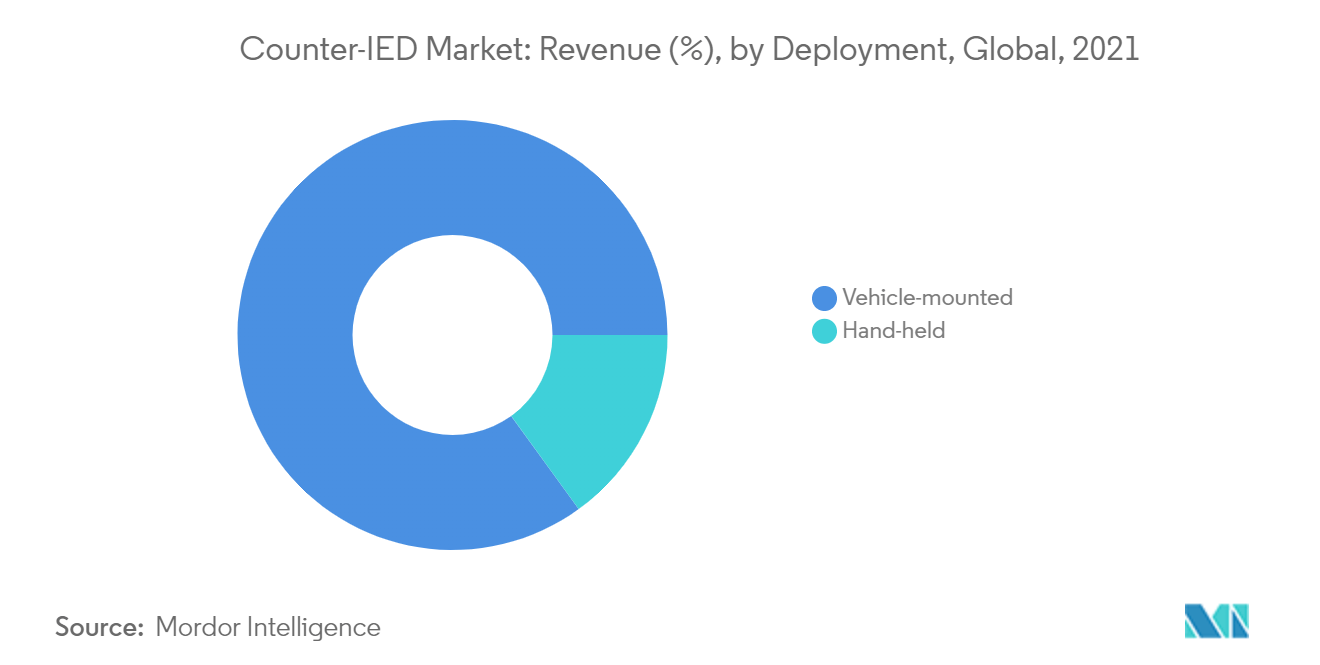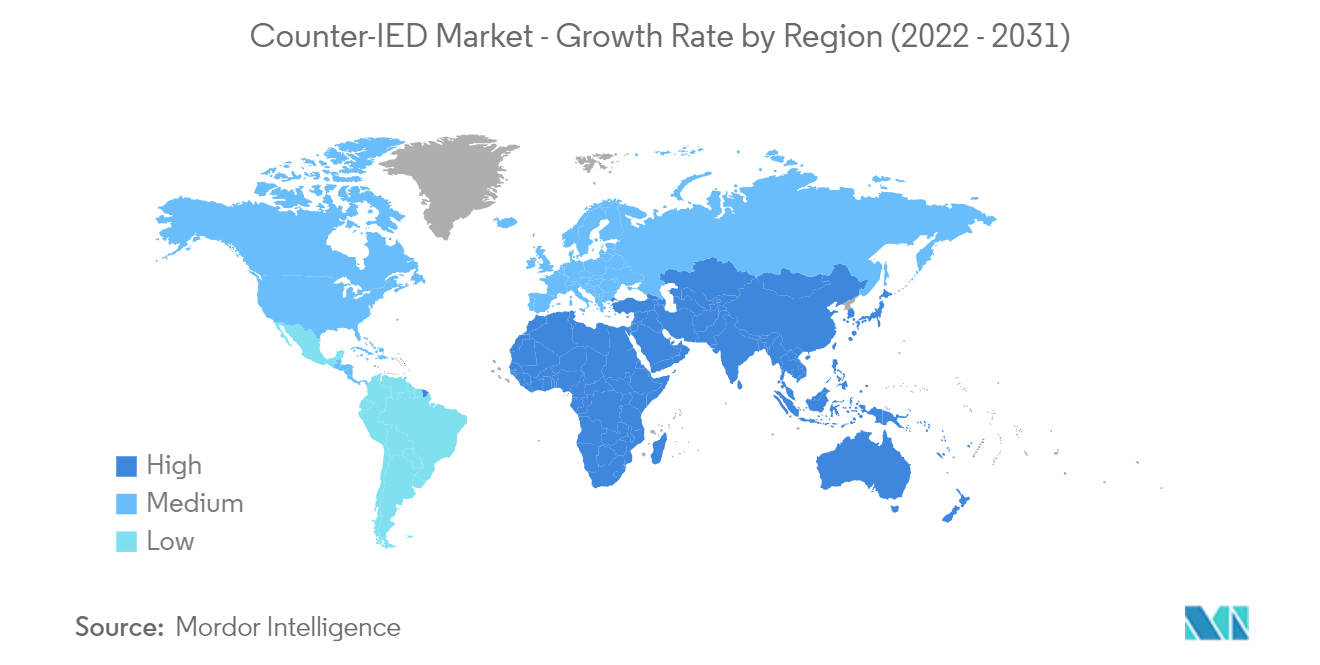Market Trends of Counter-IED Industry
This section covers the major market trends shaping the Counter IED Market according to our research experts:
The Vehicle-mounted Segment Accounts for the Largest Share in the Market
Currently, the vehicle-mounted segment has the largest share in the counter-IED market. This demand is attributed to growing investments of the armored forces around the world into procurement and integration of vehicle-mounted counter IED systems into the land, air, and sea platforms. For instance, in April 2020, the Netherlands Defence Material Organisation (DMO) placed an order to Saab for procurement of the Sea Wasp vehicle. Sea Wasp is a remote-operated underwater vehicle that is equipped with cameras and sonar systems to detect underwater explosive ordnance disposal (EOD) and the manipulator arm used for disruption of the explosive. With this contract, the Netherlands became the first European customer to acquire the Sea Wasp vehicle. Moreover, there was substantial growth in the procurements of unmanned systems for counter-IED operations. Many countries are developing their indigenous unmanned systems for counter-IED operations, keeping in mind the aspects of personnel protection in case of IED blasts during detection and countermeasure phases. Over the past five years, many land forces have introduced unmanned ground vehicles to assist in safe explosive disposal and decrease the number of soldier fatalities. Such disruptions in technology are anticipated to accelerate the growth of the market during the forecast period.

North America Registered the Largest Market Share in 2021
North America currently dominates the market and is expected to continue its dominance over the market during the forecast period. This is primarily due to the highest military spending of the United States, which accounts for about 39% of the global military expenditure in 2020. The country has been expanding its fleet of manned and unmanned systems that will help its military personnel clear IEDs and other unexploded explosives more efficiently. For instance, in February 2022, the US Air Force announced its plan to deploy the Recovery of Airbase Denied By Ordnance (RADBO) vehicle, a vehicle based on the Cougar Mine Resistant Ambush Protected vehicle (MRAP) from mid-2022. The vehicle was developed with an investment of USD 40 million and had a robotic arm and three-kilowatt Zeus III laser that is capable of detonating unexploded bombs. The US Air Force is also in plans to acquire additional 21 vehicles in the coming years. Also, Under the Man Transportable Robotic System Increment II (MTRS Inc II), the US Army is acquiring unmanned ground vehicles to support Engineers, Chemical, Biological, Radiological, and Nuclear (CBRN) Soldiers, and Special Operations Forces. The new UGVs are replacing the aging non-standard fleet of robots for locating, identifying, and clearing landmines, unexploded ordnance, and improvised explosive devices, which may enhance the maneuverability and survivability of the military personnel. Under the MTRS Inc II has been acquiring Centaur unmanned ground vehicles since 2017. Such procurements by the armed forces is anticipated to propel the growth of the market in the coming years.


